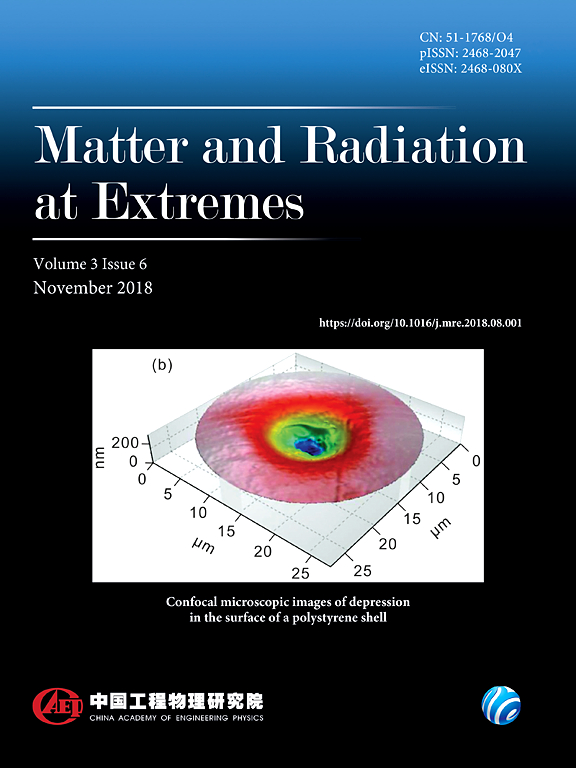二维参与双随机混合物辐射传递基准模拟
IF 4.7
1区 物理与天体物理
Q1 PHYSICS, MULTIDISCIPLINARY
引用次数: 0
摘要
我们通过开发一种精确、高效的模拟工具,研究了二维(2D)参与式二元随机混合物中的辐射传递。对于两组不同的物理参数,我们给出了二维基准结果,发现随机混合物对辐射传递的影响明显取决于参数。我们的结果证实了之前不同研究中获得的多维结果基本一致,这可以从光子平均自由路径 lp 与系统尺寸 L 之间的关系来解释。为了进一步理解粒径效应,我们采用了一个无量纲参数 lp/L,从中可以推导出临界粒径。在进一步二维模拟的基础上,我们发现当 lp/L > 0.1 时会出现不均匀混合。此外,二维材料温度分布显示,辐射会发生自屏蔽和粒子间屏蔽,并且当 lp/L 增加时会增强。我们的工作有望提供基准结果,以验证所提出的均质模型和/或其他代码在现实物理场景中的随机辐射传递。本文章由计算机程序翻译,如有差异,请以英文原文为准。
Benchmark simulations of radiative transfer in participating binary stochastic mixtures in two dimensions
We study radiative transfer in participating binary stochastic mixtures in two dimensions (2D) by developing an accurate and efficient simulation tool. For two different sets of physical parameters, 2D benchmark results are presented, and it is found that the influence of the stochastic mixture on radiative transfer is clearly parameter-dependent. Our results confirm that previous multidimensional results obtained in different studies are basically consistent, which is interpreted in terms of the relationship between the photon mean free path lp and the system size L. Nonlinear effects, including those due to scattering and radiation–material coupling, are also discussed. To further understand the particle size effect, we employ a dimensionless parameter lp/L, from which a critical particle size can be derived. On the basis of further 2D simulations, we find that an inhomogeneous mix is obtained for lp/L > 0.1. Furthermore, 2D material temperature distributions reveal that self-shielding and particle–particle shielding of radiation occur, and are enhanced when lp/L is increased. Our work is expected to provide benchmark results to verify proposed homogenized models and/or other codes for stochastic radiative transfer in realistic physical scenarios.
求助全文
通过发布文献求助,成功后即可免费获取论文全文。
去求助
来源期刊

Matter and Radiation at Extremes
Physics and Astronomy-Atomic and Molecular Physics, and Optics
CiteScore
8.60
自引率
9.80%
发文量
160
审稿时长
15 weeks
期刊介绍:
Matter and Radiation at Extremes (MRE), is committed to the publication of original and impactful research and review papers that address extreme states of matter and radiation, and the associated science and technology that are employed to produce and diagnose these conditions in the laboratory. Drivers, targets and diagnostics are included along with related numerical simulation and computational methods. It aims to provide a peer-reviewed platform for the international physics community and promote worldwide dissemination of the latest and impactful research in related fields.
 求助内容:
求助内容: 应助结果提醒方式:
应助结果提醒方式:


